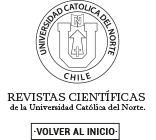Leishmaniasis en Coyo Oriente. Migrantes trasandinos en San Pedro de Atacama
Keywords:
leishmaniasis, arqueología, paleopatología, San Pedro de Atacama, archaeology, paleopathology.Abstract
En el cementerio arqueológico de Coyo Oriente se detectaron cráneos femeninos con extensas lesiones destructivas, especialmente en la órbita y nariz. Pequeñas porciones de material óseo de los bordes de las lesiones fueron sometidas a análisis molecular por amplificación del ADN de leishmaniasis, lo que hizo posible diagnosticar positivamente esta enfermedad. Se analiza la patología de estos cráneos y los elementos biológicos y culturales asociados con ellos, así como el contexto bioantropológico y cultural en que estos individuos se encontraban insertos. Dado que el vector de esta enfermedad nunca estuvo presente en el ambiente árido de San Pedro de Atacama, se postula que estas personas serían originarias de alguna zona trasandina, habiendo llegado a la localidad en calidad de migrantes, con el patógeno latente. El hecho de que todos los cráneos correspondan a individuos del sexo femenino sugeriría la posibilidad de que su presencia en San Pedro de Atacama obedeciera a un sistema patrilocal de alianzas matrimoniales.
Female skulls with massive destructive lesions, especially in orbit and nose were found in San Pedro de Atacama in the archaeological Coyo Oriente cemetery. Bone fragments from the edges of the lesions were subjected to molecular analysis by PCR DNA amplification which enabled us to diagnose leishmaniasis disease. This article examines the pathology of these skulls and biological and cultural elements associated with them, as well, the cultural and bioantropological context in which these individuals were inserted. Since the vector of this disease was never present in the arid environment of San Pedro de Atacama, it is postulated that these people would be originating on the other side of the Andes, where this disease is endemic. They can arrived to the area with some latent stage of the disease. The fact that all of them are women, suggests that their presence in San Pedro de Atacama could obey to a patrilocal system of marriage alliances.
Downloads
Downloads
Published
Issue
Section
License

All works published in Revista Estudios Atacameños (ISSN on line:0718-1043) Revista Estudios Atacameños Creative Commons International 4.0 attribution (CC BY 4.0) licence.
Authors remain the owners of their work and may republish their articles elsewhere without having to request permission, as long as they indicate that the work was originally published in Revista Estudios Atacameños (ISSN on liine:0718-1043).












